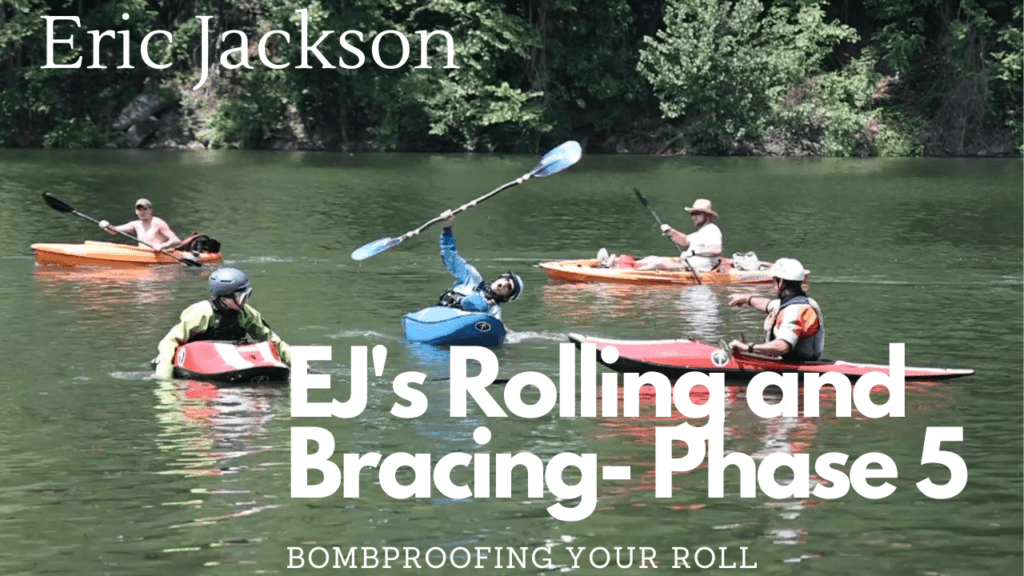This is one of the steps that 90% of kayakers who learn the roll, never practice, and it is the reason for most of the underwater panicky feelings that kayakers get, and consequently, most swims. Why? Because, when you learn to roll, you want to practice it and most kayakers will do at least 100 rolls before they try it in whitewater. Out of those 100 rolls, most or all of them are done with the paddle already in “set-up, or Home base position” before they tip over. This is skipping a key step that you will have to do when in whitewater, GETTING into set-up position after you flip over. What happens next is that after practicing 50 -100, or even worse, 1,000 rolls you develop your expectations for what it feels like, how long you spend underwater, etc.. Panic is what happens when the unexpected happens and you are not ready for it. It goes like this:
- When practicing your roll already set up – you tip over, wait 1 second, and then roll up – total underwater time lasts 2-3 seconds on average. This becomes your expectation, even without knowing it.
- When you tip over in the river, or in the pool, but not set-up, it takes an average of 3 seconds just to get set up, and then another 2-3 seconds to roll up. The first three seconds of just setting up, is more than that amount of time you typically spend under water total when practicing so far. By the time you are set-up and ready to roll, your brain is already feeling like something is wrong and you rush the roll, lift your head, and fail on the roll. Now you really panic and may or may not get it right the second time. People always seem to say “I have a good flat-water roll, but not a good whitewater roll.” That isn’t the case. They have a good flat water roll as long as they are set-up when they tip over. They don’t have a good flat-water roll when they tip over not set up. They need to practice how to do the set-up underwater in flat water. Once they have practiced this many times, they will be much more comfortable rolling in whitewater because they will be used to taking the extra time to set up under water.
- Solution 1: After you learn phase 4 of the roll, learn phase 5, which is to practice tipping over with your paddle in every imaginable position, then moving your paddle into the home base position while underwater, and then rolling up.
- Solution 2: remember that part of the reason people panic is the CO2 levels in their lungs are higher than normal, making you feel like you need to breathe. Practice setting up underwater and then stay under as long as you are comfortable before rolling up. Essentially you are practicing holding your breath and then rolling up. This will kill two birds with one stone: First – you’ll be comfortable under water for a longer period; Secondly – you’ll have lots of experience spending more than 2-3 seconds underwater, so when you end up underwater in the river for 6 seconds, you won’t automatically panic.
- Tip: practice tipping over to the left side of the boat, as well as the right side. Get comfortable knowing that it doesn’t matter which side you tip over.
For the paperback book you can get one on Amazon:

